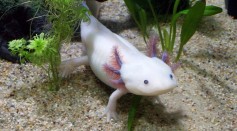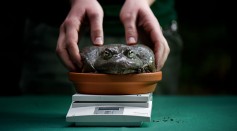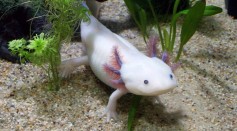regeneration

Self-Repairing Animals: These X Creatures Can Regenerate Their Limbs, Body Parts

'Stuck' Stem Cells Could Be the Reason Why Hair Turns Gray With Age, Study Says
Zebrafish Can Help Repair Cardiovascular Impairment, Damaged Heart

First-Ever Frog Limb Regrowth Found Effective; Serves as Stepping Stone for Regenerative Medicine
Lizards Regenerate Perfect New Tails With Bone and Nerves After Being Injected With Gene-Edited Stem Cells
Ancestral Gene Responsible For Tetrapod's Postaxial and Preaxial Limb Evolution Identified
Hair Cell Regeneration in Humans Might Be Possible Using Lab-Grown Cochlear Organoids, New Research Found
Study on Regenerative Process Identifies TRACS as Secret to Flatworm Regeneration Better Than Earthworms'

Scientists Are One Step Closer in Discovering the Mystery Behind the Regenerative Ability of Salamanders
First-Ever Sea Slug Decapitation and Whole Body Regeneration Reported
Nanotechnology: Speeding Up the Healing Process
Body Regeneration Plus Brain Degeneration may Result to "Zombies"
Human Limb Regeneration Might Be Possible Through Immortal Acorn Worms’ DNA Study, Scientists Say
'New Bone Scaffold Material' Has Been Developed & Apt For Bone Regeneration
Most Popular

How Technology Is Changing the Real Estate Industry?

How a Plant-Based Diet Can Protect Against Breast Cancer: Insights from Nutrition Research

Study Reveals High Turnover in Scientific Research Careers: What This Means for Future Scientists

Nikolay Karpenko Biography, Photo, Career, Accomplishments





